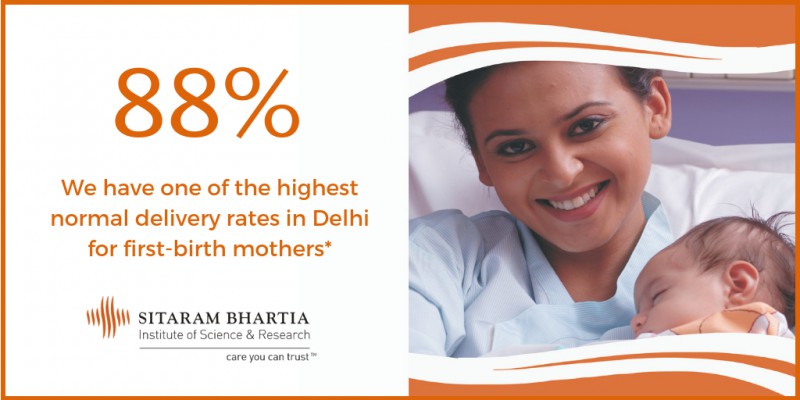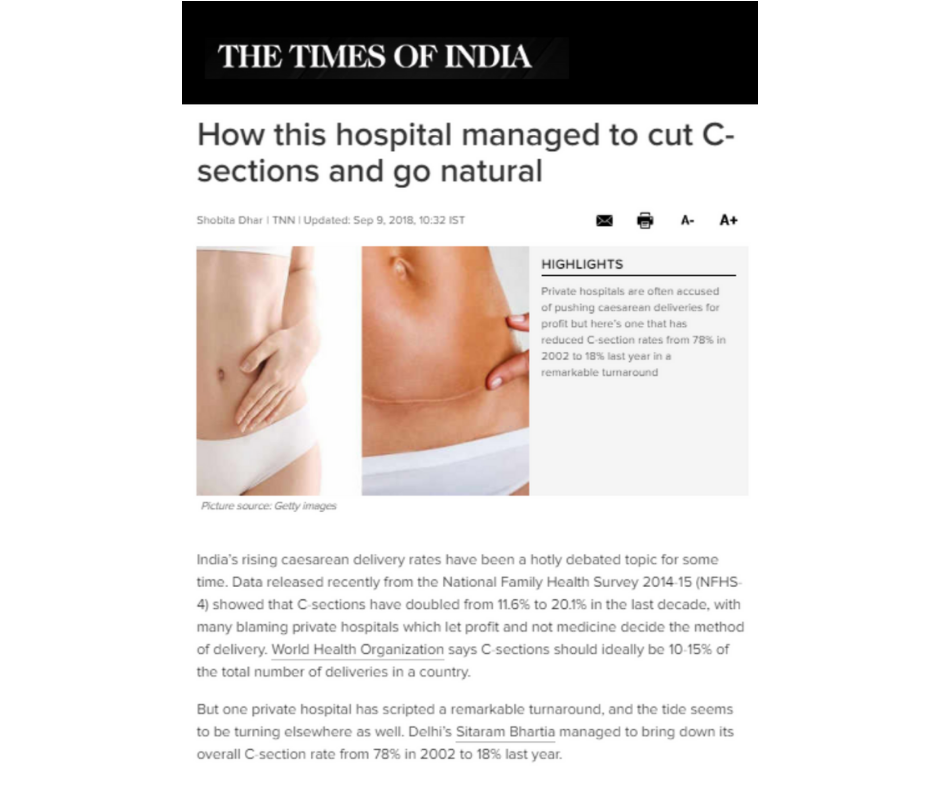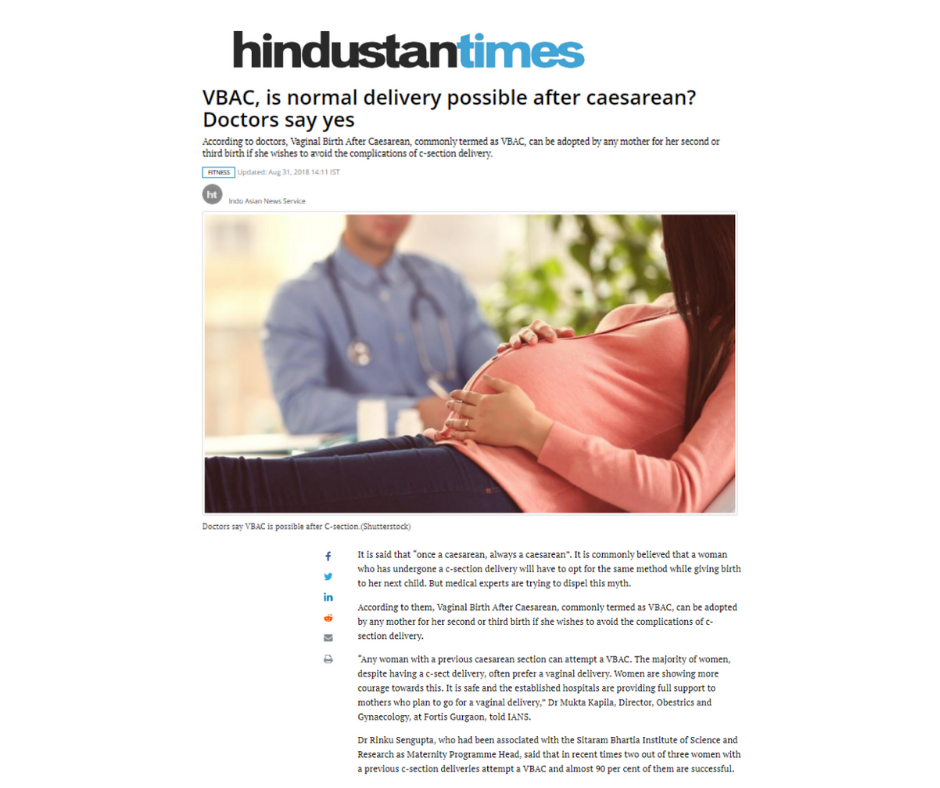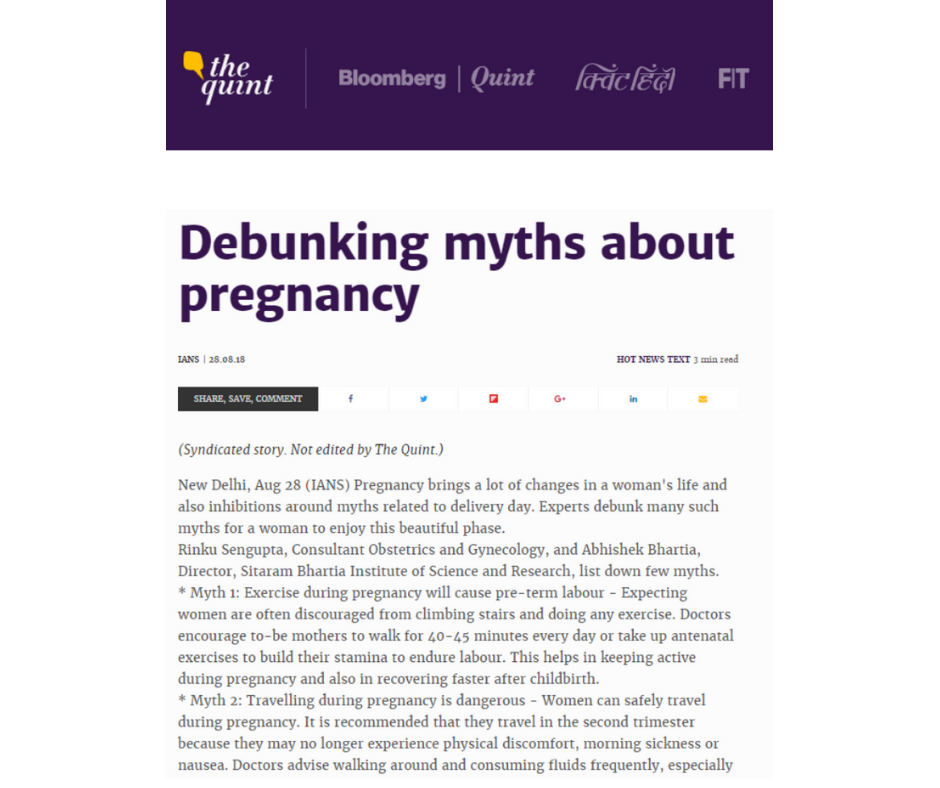Caesarean Section Rates

At Sitaram Bhartia, we focus on two major quality indicators to measure our outcomes – our caesarean rates and the feedback we receive from our patients. Because following ethical and evidence-based medical practice is a core belief for us and our gynaecology team, we are always happy to disclose our caesarean-section rates.
In 2016, our caesarean-section rate for low-risk, first-birth moms delivered by our staff consultants was 12%; this caesarean rate is possibly the lowest for a private hospital in Delhi/NCR and compares favourably with renowned international hospitals.
Our caesarean rates for moms with a prior normal delivery, with a single baby in the head-down position who cross 37 weeks is < 2%.
87% of women attempting a vaginal birth after caesarean (VBAC) had successful normal deliveries in 2016.
Media Coverage
Patient Ratings
Caesarean Section – Frequently Asked Questions
How should I interpret a reported Caesarean section rate?
While one caesarean section rate is difficult to interpret, the risk of a caesarean section varies by many factors such as whether the woman has had a prior normal delivery or caesarean, whether the baby is in breech or abnormal position, whether labour starts prematurely and whether a woman is expecting twins.
Is it possible to have a normal delivery after a Caesarean section?
Once a caesarean, always a caesarean is a commonly held misconception. Most women with a prior caesarean can attempt a normal delivery. Your doctor can guide you through the best course of action for your delivery.
Does a Caesarean section have any risks?
The global rise in caesarean rates is a major cause of concern and recognising this fact, the American College of Obstetricians and Gynaecologists (ACOG) has issued a statement saying that “Pregnant women [should] plan for a vaginal birth unless there is a medical reason for a caesarean.”
According to the ACOG, caesarean deliveries carry the following risks:
- Risks of injury during surgery
- Longer hospital stays
- Serious complications in future pregnancies, and
- Health complications in babies born via caesarean-section
What benefits does a vaginal birth have?
According to the ACOG, babies born by vaginal delivery have fewer respiratory problems. New research has emerged that provides tantalising evidence on the possible benefits of a vaginal birth that includes protection from allergies, excessive weight gain and Type 1 Diabetes.
Why should a cesarean section be avoided?
A cesarean section should be avoided as it might have some long term implications on the mother’s body. It shouldn’t be done until needed.
Please contact us if you’d like to learn more about Caesarean sections or speak to a doctor about them.







